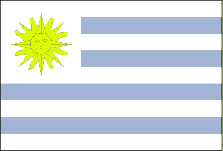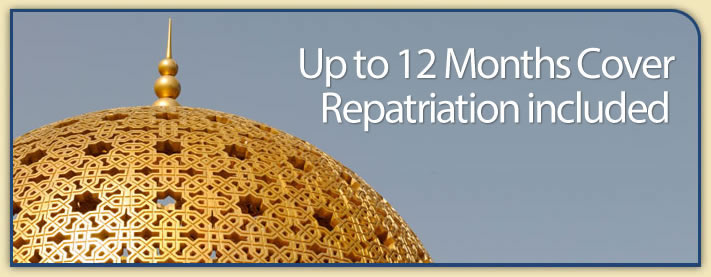Country Guide • Uruguay

Uruguay is one of the smallest of the South American republics. It is bounded to the north by Brazil, to the southeast by the Atlantic, and is separated from Argentina in the west and south by the River Uruguay, which widens out into the Rio de la Plata estuary.
| Official Name | Oriental Republic of Uruguay |
|---|---|
| Area | 176,220km² (68,039mile²) |
| Population | 3,413,329 |
| Continent | South America |
| Population per mile² | 50 |
| Capital City | Montevideo |
| Religions | Roman Catholic 66% (less than half of the adult population attends church regularly), Protestant 2%, Jewish 1%, non-professing or other 31% |
| Language | Spanish, Portunol, or Brazilero (Portuguese-Spanish mix on the Brazilian frontier) |
| Government | Constitutional Republic |
| Currency | Uruguay Peso |
| GDP | $26.5 billion |
| GDP per Head | $7,800 |
| Natural Resources | Arable land, hydropower, minor minerals, fisheries |
| Land Use | Arable Land 7.21% |
| Agriculture | Rice, wheat, corn, barley; livestock; fish |
| Industry | Food processing, electrical machinery, transportation equipment, petroleum products, textiles, chemicals, beverages |
| Tourism | Uruguay's main attraction is its beaches, so most visitors come in summer |
| Natural Hazards | Seasonally high winds (the pampero is a chilly and occasional violent wind which blows north from the Argentine pampas), droughts, floods; because of the absence of mountains, which act as weather barriers, all locations are particularly vulnerable to rapid changes from weather fronts |
| Health Risks | Hepatitis |
| Climate | Uruguay has an exceptionally fine temperate climate, with mild summers and winters. Summer is from December to March and is the most pleasant time; the climate during other seasons offers bright, sunny days and cool nights. Average highs and lows in summer (January) in Montevideo are 28° C and 17° C, respectively, with an absolute maximum of 43° C; comparable numbers for Artigas in the northwest are 33° C and 18° C, with the highest temperature ever recorded (42° C). Winter (July) average highs and lows in Montevideo are 14° C and 6° C, respectively, Rainfall is fairly evenly distributed throughout the year, and annual amounts increase from southeast to northwest. Montevideo averages 950 millimeters annually, and Artigas receives 1,235 millimeters in an average year |
| Time | GMT/UTC-3 hours |
| National Days | July 18 Constitution Day, August 25 National Independence Day, October 12 Discovery of America |
| Visas | British passport holders do not require visas for entry into Uruguay and can usually stay for up to three months. You can apply to extend your stay for a further three months if necessary |
| British Embassy | Embassy Details |
Information Only
The content above is for information purposes only and we have tried to ensure that the information is as accurate as possible. We cannot accept any responsibility for any inconvenience, loss or injury as a result of the information above. You should always check and verify any critical information like visas, health and safety and customs with the relevant authorities before you travel since information can change at any time.



